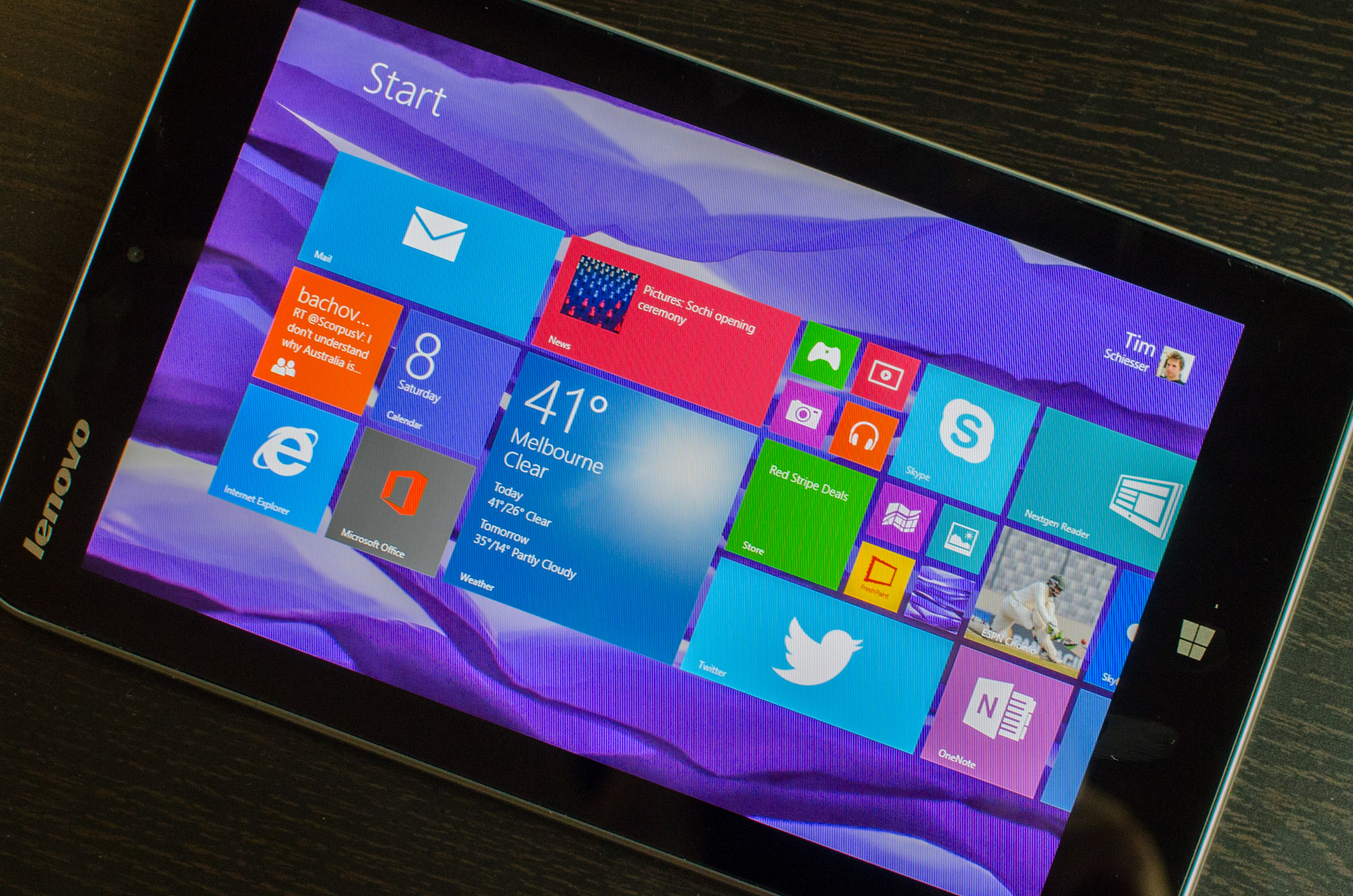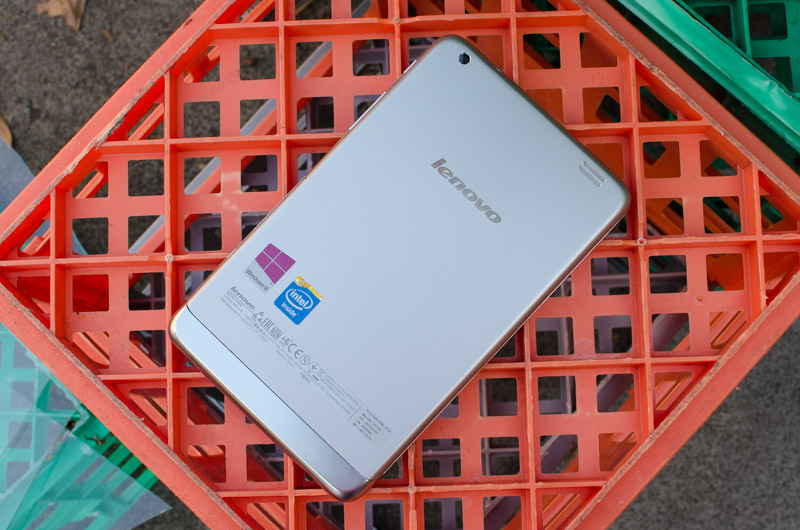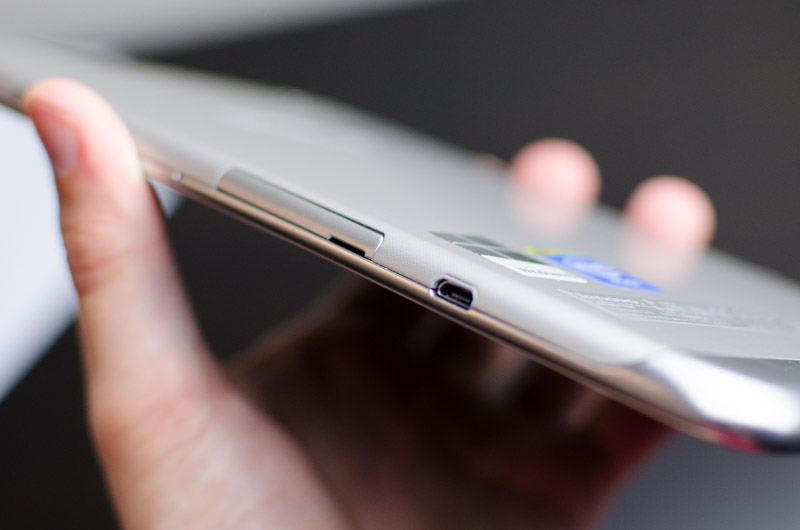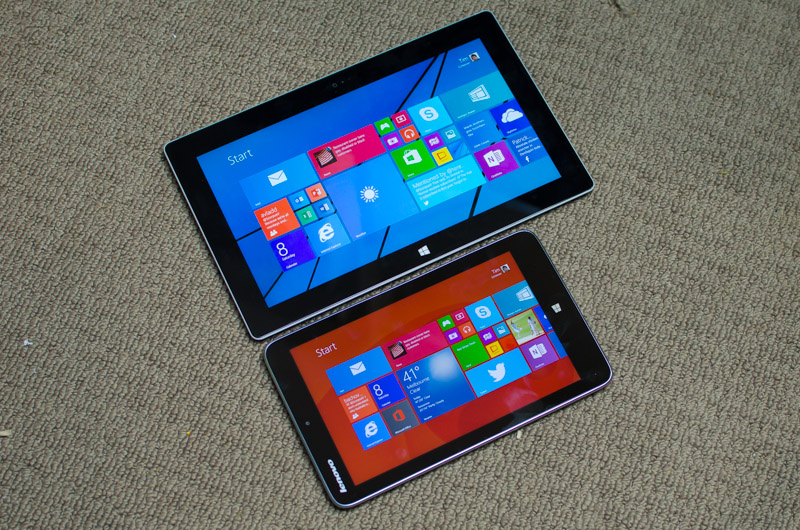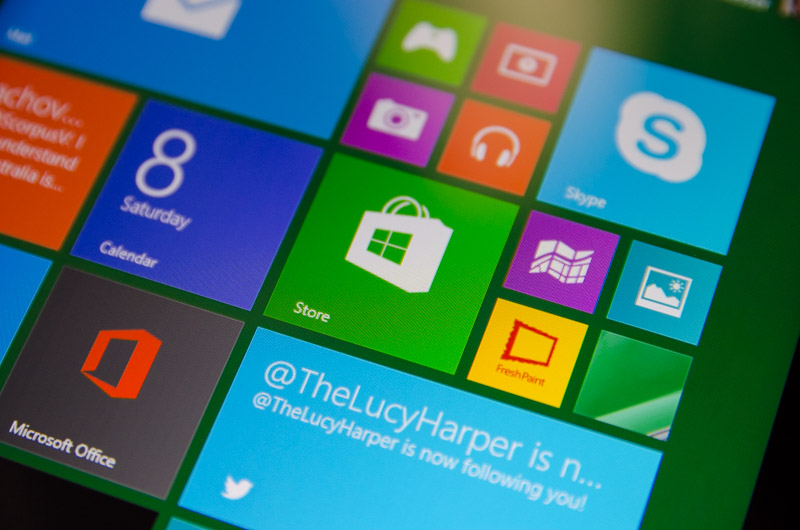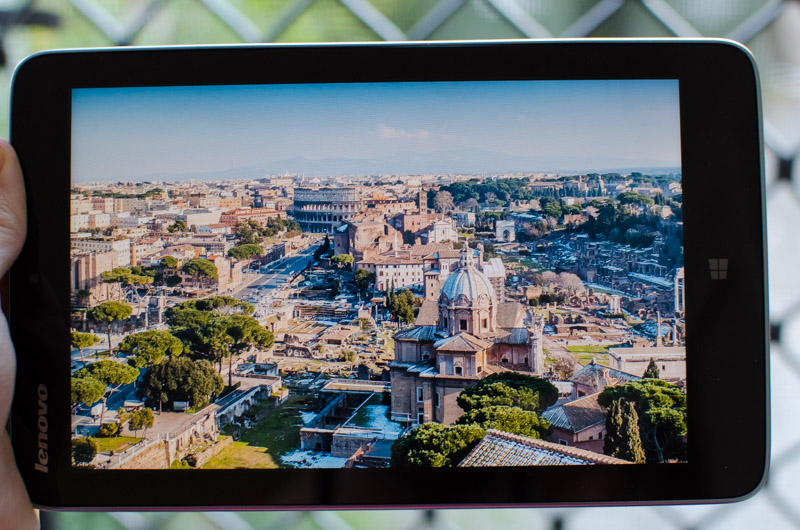Yes, you read the title correctly: Lenovo has indeed named a tablet 'Miix 2 8'. Somewhere along the line, Lenovo's marketing department fell asleep and let this slip through. And so here's Lenovo's consumer version of an affordable Windows 8.1 powered tablet. Surely no company in their right mind would genuinely name a tablet headed to Western markets in such a confusing and nonsensical way, but alas, it's the way things are.
Lenovo Miix 2 8 - $240 - $349
- 8.0", 1280x720 IPS LCD (189 ppi)
- Intel Bay Trail Z3740 SoC
- 1.3 GHz quad-core CPU, HD Graphics, 2GB RAM
- 32 GB internal storage, microSD card slot
- 5 MP camera, 1/4" sensor, f/2.4 lens, 1080p video
- Wi-Fi a/b/g/n, Bluetooth 4.0, 17.5 Wh battery
- Windows 8.1 + Microsoft Office
- 350 grams, 8.35mm thick
Even though Windows 8 has been out for some time now, it's been only since late last year that we started to see 8-inch Windows tablets headed to market. The Miix 2 8 isn't geared up for high performance tasks, nor does it have top-end features, but its use of an Intel Atom x86-capable processor and 1280 x 800 display present very decent value for the tablet's $240 asking price (originally it was $300).
We recently reviewed the similarly Windows 8-powered Toshiba Encore, but it's the Miix 2 that we've had on-hand for a longer period. Read on to find out how well Windows 8.1 functions on smaller-screened devices and whether the full Windows desktop is practical in this form factor. Plus, the Miix 8 2 has to compete with similarly-priced Android and iOS tablets that are more focused on media consumption.
Design
Every tablet on the market has the same base design, because there's really not all that much you can do with a large display in a rectangular body. Yet every manufacturer manages to include something unique to make the tablet their own, including Lenovo for the Miix 2 8.
This particular device only comes in silver, with black bezels around the display, and the two complement each other nicely. Like nearly every tablet, the front panel is protected with glass smooth enough that your fingers simply fly across when you're manipulating content on the display. The back is mostly constructed from metal (likely aluminum), which is patterned with tiny diamond shapes that gives it an extra layer of texture, making it feel even nicer. To allow the wireless radios in the device to function correctly, there's also a strip of smooth, metal-colored plastic that runs along the bottom.
I'm always a fan of metal on tablets because it's strong, feels great and often looks great, but the Miix 2 8 isn't without oddities. There's quite a noticeable gap between the metal back plate and the plastic mid-section, most prominent along the bottom of the tablet's rear. In some ways it appears Lenovo has taken inspiration from the iPad for the Miix 2 8's design, but Apple would never let this seam pass engineering quality control.
There are also a range of stickers inexplicably applied to the device out of the box, including a Windows 8 logo, Intel inside logo and product information. Typically you only see these sorts of stickers on laptops - and yes, they are removable - but they look out of place and dominating on an otherwise reasonably sleek tablet.
One thing I was really happy with as far as the Miix 2 8's design goes is its size. The tablet is both thin (8.35mm thick) and reasonably light (350 grams), plus the overall profile of the 8-inch body makes it a very portable device. The 16:10 aspect ratio display also keeps the tablet from being too slim or odd to hold, yet is still great for widescreen content and snapping applications.
Everything on the Miix 2 8 is positioned to make portrait the default orientation. The capacitive Windows button is below the display's bottom edge, and there's a front-facing camera above, plus some cleverly hidden sensors and a Lenovo logo. The back panel has a prominent Lenovo logo as well, plus a camera in the very top left corner, and a speaker in the top right. Unfortunately there's only one speaker on the Miix 2 8, but it's reasonably powerful, if quite poor in terms of quality.
Apart from the 3.5mm audio jack on the top edge, all the other features of the Miix 2 8's design are on the right side. At the top is the power button, then the volume rocker, a panel that hides a microSD card slot, and the microUSB charging port. The buttons are in a reasonable position, but like all tablets, they're never quite at your fingertips all the time.
The design of the Lenovo Miix 2 8 is quite nice, and forgiving a few oddities in construction, is well suited to the smaller form factor of tablets. It doesn't have that same premium feel as the Apple iPad mini, but I'd happily use it without complaint.
Display
For some bizarre reason, Windows manufacturers have once again fallen into the trap of including low-resolution displays, despite competitors at the same price points offering pixel-dense alternatives. The Lenovo Miix 2 8's 8-inch TFT IPS LCD panel with a 16:10 aspect ratio may seem appealing at first, but the 1280 x 800 display resolution leaves a lot to be desired.
To start with, a WXGA resolution for an 8-inch display equates to 189 pixels per inch, which is substandard for a device on sale in 2014. The Miix 2 8 can just handle 720p content natively, but falls behind when you're looking at high-resolution imagery or 1080p content. Text also suffers, with the display producing pronounced jagged edges at a comfortable viewing distance and reasonably visible pixels.
Before anyone complains that this tablet costs just $299, might I remind you of a few similarly-priced tablets on the market with higher-resolution panels. The 2013 Google Nexus 7 ($229) and 7-inch Amazon Kindle Fire HDX ($199) both pack 1080p displays, or you can grab the $339 Kindle Fire HDX 8.9" with a 2560 x 1600 display. Admittedly neither of these devices have the exact same display size as the Miix 2 8, but then again LG's G Pad 8.3 does pack a 1920 x 1200 panel for $329.
Strangely, nearly all 8-inch Windows 8.1 tablets feature 1280 x 800 displays, like the switch to Windows somehow forces manufacturers to lower the display resolution (it doesn't). In my eyes this isn't a good thing, and I can't wait to see all OEMs embrace pixel-dense displays as the norm, regardless of the OS they're running.
If you can look past the display resolution, the Lenovo Miix 2 8's panel is actually quite reasonable. Colors appear reasonably saturated yet also balanced, although gamma seems a little off the mark, and there's little-to-no color banding when looking at gradients. Black levels aren't the best I've seen, and the backlight does visibly pass through when displaying dark items, but whites appear strong and accurate.
Brightness is very good from the display, and thanks to its IPS nature, it's reasonably easy to read outdoors, thanks to few layers between the glass and panel itself. You also get automatic brightness adjustments, which aren't the fastest on the Miix 2 8, but work quite well. All this is complemented by great viewing angles, which allow you to easily read the display at off-angles, such as when the device may be laying on a desk.
If it wasn't for the low resolution of the Lenovo Miix 2 8's display, I'd say this is one of the better panels I've used on this class of tablets. Instead it's merely average, just one key feature away from being awesome.
